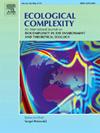The negative effect of fragmentation is one of the main concerns in the study of biodiversity loss in landscape ecology. The use of the matrix has been considered an important factor because it can change a population's relationship with the configuration of the landscape. A systematic way to assess the effect of matrix quality in fragmented landscapes could lead to a better understanding of how matrices can suppress the negative effect of fragmentation. We built a computational individual-based model capable of simulating bi-dimensional landscapes with three types of land cover (habitat, suitable matrix and hostile matrix) and individuals that inhabit those landscapes. We explored in which situations suitable matrix proportions and the degree of usability of this suitable matrix mitigate the negative effect of fragmentation per se. We observed that (i) an increase in the general matrix quality (increases in the suitable matrix proportion and/or usability) can suppress the fragmentation effect in 47% of the simulated scenarios; (ii) the less usable the matrix is, the more of it is needed to suppress the fragmentation effect; (iii) there is a level of usability below which increasing the suitable matrix proportion does cause the fragmentation effect to cease. These results point toward landscape management decisions that consider the similarity of the matrix to the native habitat under management. We suggest that an index to measure the usability of elements of the matrix could be an important tool for using computational models in landscape management more efficiently.


